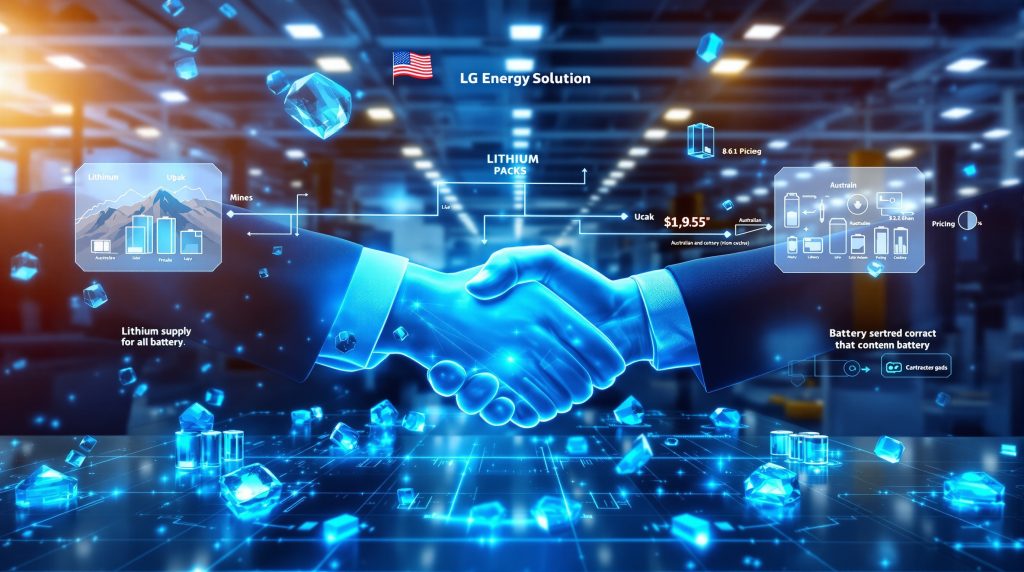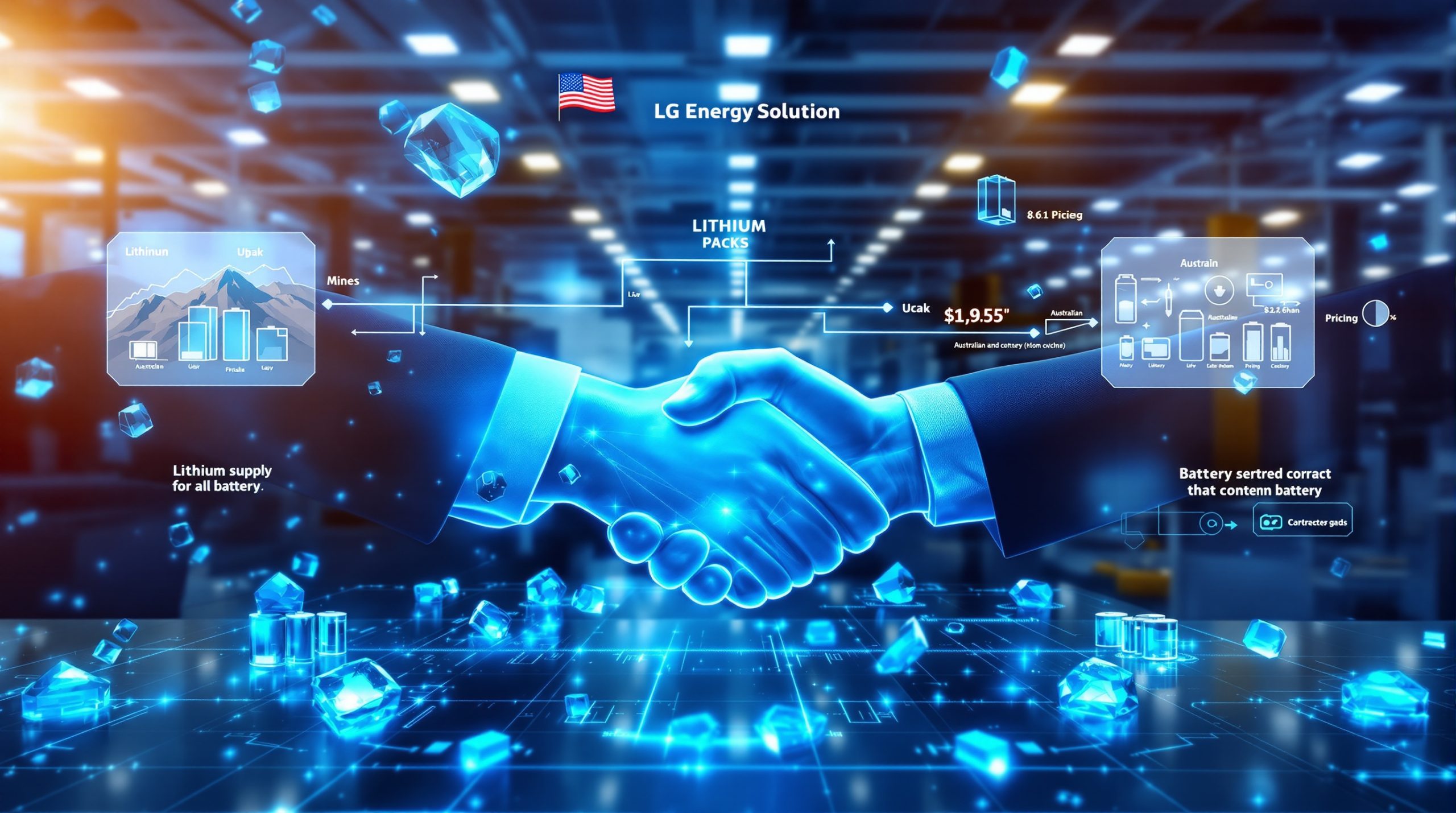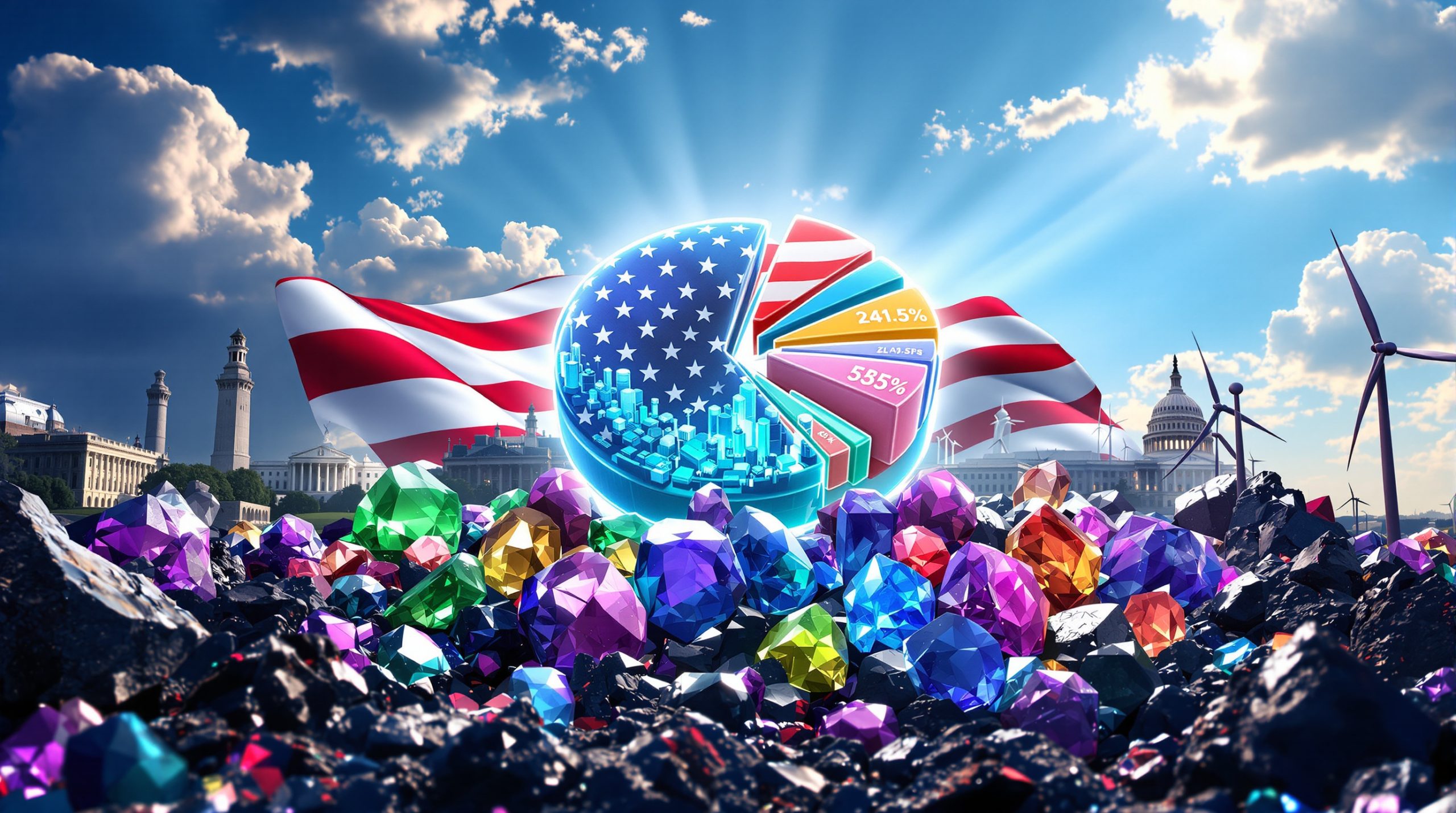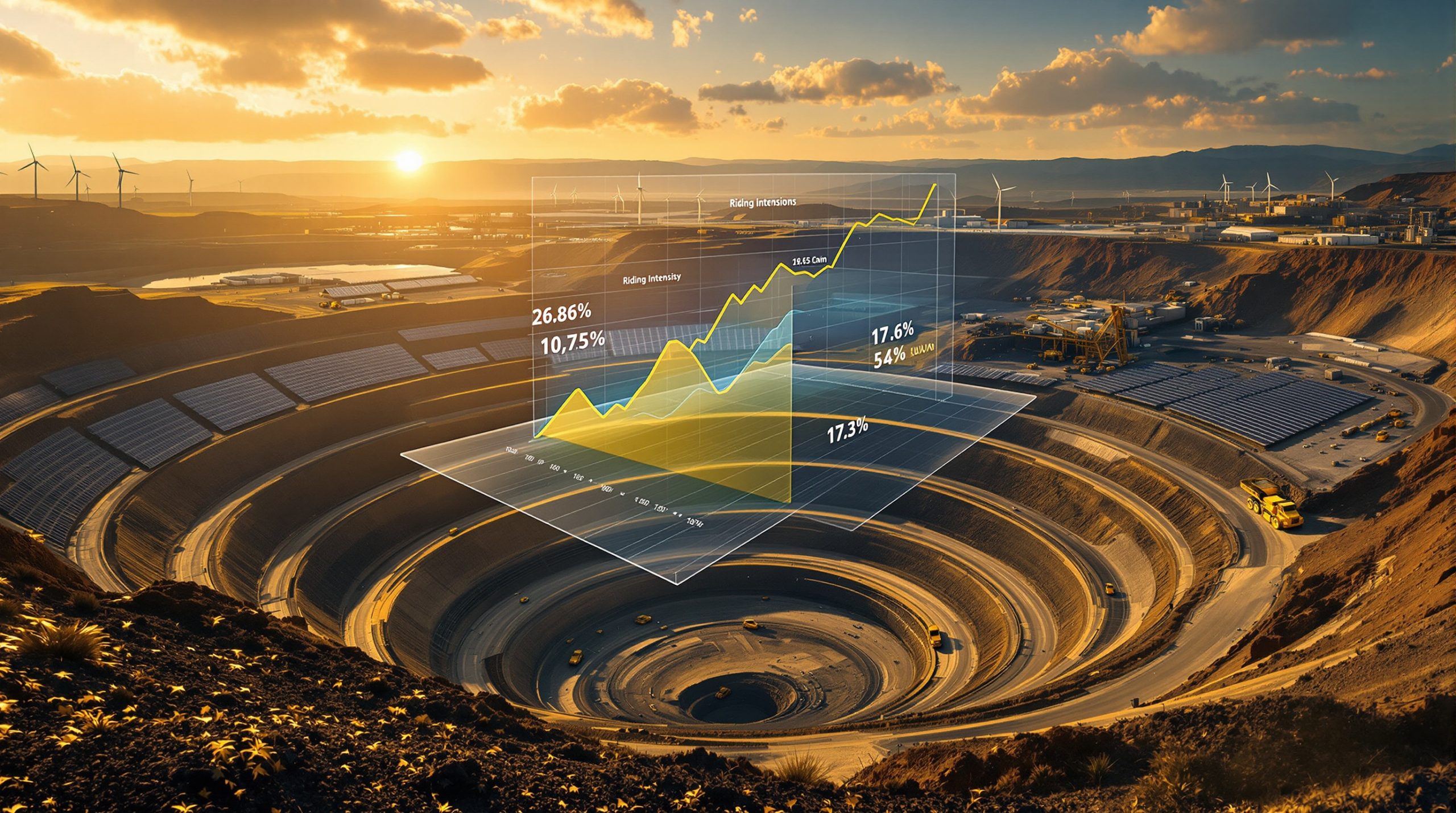Understanding Lithium Offtake Agreements: The LG Energy Solution Strategy
Lithium offtake agreements have emerged as critical strategic tools in the rapidly evolving electric vehicle (EV) supply chain. These contractual arrangements between resource producers and buyers establish future purchase terms for lithium materials, creating stability in an otherwise volatile market. As battery demand continues to accelerate globally, companies like LG Energy Solution have developed sophisticated approaches to securing their lithium supply through these agreements.
With global lithium demand projected to triple by 2030, battery manufacturers are racing to establish reliable supply chains through strategic partnerships with producers across multiple continents. These agreements provide much more than simple material procurement – they offer financial security, regulatory compliance, and competitive advantages in an increasingly crowded market.
What is a lithium offtake agreement and why are they critical for battery manufacturers?
An offtake agreement represents a contractual commitment between a resource producer and buyer, establishing terms for future purchases of materials like lithium. These agreements have become foundational to the battery supply chain, providing crucial benefits for all parties involved.
For battery manufacturers, the advantages include guaranteed supply security during market shortages, price stability through negotiated terms that protect against extreme volatility, and regulatory compliance by securing materials that meet stringent governmental requirements for battery production and EV subsidies.
Lithium producers gain financing support as banks view these agreements as reliable collateral, revenue predictability through guaranteed sales volumes, and market validation that enhances company value and investor confidence.
The broader supply chain benefits from enhanced transparency in material sourcing, improved quality control through consistent specifications, and strategic planning capabilities that allow for more efficient capacity expansion.
As electric vehicle adoption accelerates globally, these agreements have evolved beyond simple procurement tools to become strategic assets that help manufacturers navigate complex regulatory landscapes like the Inflation Reduction Act (IRA) in the United States, which requires specific securing lithium supply strategies for battery materials.
How do lithium offtake agreements support project financing?
The financial foundation for new lithium projects
Lithium projects require substantial capital investment, with development costs often exceeding hundreds of millions of dollars. Offtake agreements serve as the cornerstone for securing this financing through several mechanisms.
These agreements significantly enhance bankability by serving as collateral for project financing. Lenders view contracts with established companies like LG Energy Solution as strong indicators of future revenue reliability, often reducing borrowing costs by 2-3 percentage points compared to unsecured projects.
The risk reduction aspect cannot be overstated. Long-term contracts mitigate market volatility concerns for lenders, who typically require evidence of stable future revenue streams before committing capital to mining ventures. This is particularly important in the lithium sector, which has experienced price swings of more than 400% over the past five years.
Capital attraction extends beyond traditional lenders. Agreements with tier-1 partners like LG Energy Solution signal project quality to equity investors, often resulting in valuation premiums of 20-40% compared to similar projects without secured offtake.
Perhaps most importantly, these agreements can dramatically accelerate development timelines. Projects with established offtake partners typically reach financial close 12-18 months faster than those still seeking buyers, allowing producers to capitalize on favorable market conditions.
Case study: Financial impact metrics
| Financing Aspect | Without Offtake | With Major Offtake |
|---|---|---|
| Debt financing terms | 8-10% interest | 5-7% interest |
| Equity requirements | 40-50% | 25-35% |
| Project valuation | Base valuation | 20-40% premium |
| Time to financial close | 18-24 months | 8-12 months |
These financial advantages create a significant competitive edge for lithium projects that can secure high-quality offtake partners early in their development cycle. For early-stage companies, landing an agreement with a company like LG Energy Solution can be transformational, as evidenced by the 15% stock price jump Anson Resources experienced following their announcement of a deal with the Korean battery manufacturer.
What makes LG Energy Solution a preferred offtake partner?
Strategic advantages of partnering with a battery manufacturing leader
LG Energy Solution has established itself as one of the most sought-after offtake partners in the lithium industry due to several key advantages it brings to potential suppliers.
As the second-largest global battery manufacturer with approximately 25% market share, LG Energy Solution represents a massive and growing demand center for lithium materials. The company's production capacity exceeds 200 GWh annually, requiring substantial volumes of battery-grade lithium compounds.
Financial stability provides another compelling reason for producers to seek partnerships with LG. With annual revenue exceeding $20 billion and strong growth projections, the company has demonstrated the financial capacity to honor long-term purchase commitments even during market downturns.
LG's technical expertise and rigorous quality requirements serve as validation of producer capabilities. Meeting the company's specifications often requires sophisticated processing technology and quality control systems that position suppliers to serve other tier-1 customers.
The company's downstream connections create additional value for suppliers. LG maintains direct supply relationships with major automotive manufacturers including General Motors, Hyundai, and Stellantis, providing indirect market access to these important end users.
Regulatory navigation capabilities have become increasingly important as battery material sourcing faces growing government scrutiny. LG's experience with complex frameworks like the Inflation Reduction Act provides partners with valuable insights into compliance requirements that can determine eligibility for critical subsidies.
What are the key elements of LG Energy Solution's lithium offtake strategy?
Geographic diversification and supply security
LG Energy Solution has developed a sophisticated approach to lithium sourcing that balances several strategic priorities to ensure reliable material supply regardless of geopolitical or market disruptions.
The company employs a multi-continent approach, maintaining a balanced portfolio of suppliers across North America, Australia, and South America. This geographic diversification minimizes the risk of supply chain disruptions due to regional issues while providing access to different types of lithium resources.
Processing flexibility represents another pillar of LG's strategy. The company has secured agreements covering various lithium forms including carbonate, hydroxide, and spodumene concentrate, allowing it to adapt to changing market conditions and processing technologies.
Production stage diversity further enhances security. LG maintains relationships with both established operations and development-stage projects, creating a pipeline of future supply while ensuring immediate material availability from current producers.
The company has also embraced extraction method variety, supporting conventional mining, brine operations, and innovative direct lithium extraction technologies that may offer improved sustainability profiles and cost structures.
Regulatory compliance prioritization
Regulatory considerations have become increasingly central to LG Energy Solution's offtake strategy as governments worldwide implement policies to reshape battery supply chains.
IRA alignment has emerged as a particular focus, with increased emphasis on North American and Free Trade Agreement partner sources that can qualify for US tax incentives. This shift explains the strategic importance of deals like the Anson Resources agreement for lithium from Utah's Paradox Basin.
ESG considerations have also gained prominence in LG's supplier selection process. The company increasingly shows preference for projects with lower environmental footprints, particularly regarding carbon emissions and water usage, as automotive customers demand more sustainable battery materials.
Traceability requirements have been strengthened throughout LG's supply chain. Chain-of-custody documentation must now follow materials from extraction through processing, enabling verification of origin and production methods that meet regulatory standards.
Certification standards provide additional validation. LG increasingly requires third-party verification of sustainable production practices, working with organizations like the Initiative for Responsible Mining Assurance to ensure supplier compliance with environmental and social standards.
How do recent lithium offtake agreements with LG Energy Solution compare?
Comparative analysis of major agreements
LG Energy Solution has established a diverse portfolio of lithium supply agreements over the past several years, each with unique characteristics that reflect the company's evolving strategy and market conditions at the time of signing.
| Producer | Project Location | Annual Volume | Duration | Material Type | Special Provisions |
|---|---|---|---|---|---|
| Anson Resources | Utah, USA | 4,000 tonnes | 5 years (extendable) | Lithium carbonate | IRA compliance, price floors |
| WesCEF | Western Australia | 85,000 tonnes | Multi-year | Lithium concentrate | Secondary processing options |
| Liontown Resources | Western Australia | ~150,000 tonnes annually | 15 years | Spodumene concentrate | Downstream collaboration |
| ExxonMobil | Arkansas, USA | Up to 100,000 tonnes | Multi-year MOU | Lithium carbonate | Direct Lithium Extraction technology |
Several trends emerge from this comparison. First, volumes vary dramatically based on project scale and material type, with concentrate agreements typically involving much larger tonnages than refined products. Second, agreement duration generally correlates with project development stage – established operations secure longer terms than early-stage ventures. Third, special provisions increasingly focus on regulatory compliance and technological collaboration rather than just material delivery terms.
The significant volume differences between agreements reflect not only varying project scales but also LG's strategic decision to maintain supply flexibility by working with both major producers and emerging companies with innovative approaches to lithium extraction and processing.
What does the Anson Resources offtake deal reveal about LG Energy Solution's strategy?
Strategic significance of the Utah Paradox Basin agreement
The Anson Resources agreement, while modest in volume compared to LG's Australian partnerships, reveals several important strategic priorities for the battery manufacturer.
Domestic US supply chain development represents a clear focus. By securing lithium from Utah's Paradox Basin, LG strengthens its North American production capabilities and reduces dependence on overseas supply chains that face increasing logistical and geopolitical challenges.
IRA compliance stands as perhaps the most significant driver. The agreement positions LG's batteries for tax credit eligibility under US regulations that require increasing percentages of battery materials to be sourced from North America or free trade partners. This compliance capability creates substantial value for LG's automotive customers.
The deal also represents technology validation for Anson's innovative extraction methodology. LG's willingness to commit to purchasing materials from a relatively early-stage project signals confidence in the producer's technical approach and product quality.
From a capacity perspective, the agreement represents approximately 40% of Anson's planned production, providing the developer with significant revenue visibility while allowing flexibility to establish relationships with additional customers or reserve material for potential downstream processing.
The agreement's growth potential should not be overlooked. The inclusion of expansion provisions as the project scales indicates LG's interest in potentially securing larger volumes as Anson increases production capacity in response to growing market demand.
How are pricing mechanisms structured in lithium offtake agreements?
Evolution of pricing models in the lithium market
Pricing structures within lithium offtake agreements have evolved significantly as the market has matured, moving from relatively simple fixed arrangements to sophisticated mechanisms that balance risk between producers and consumers.
Fixed price arrangements, once common in the industry, have declined in popularity due to market volatility. These structures, which establish predetermined prices for the duration of the agreement, create significant risk for both parties if market conditions change dramatically.
Floating price mechanisms have gained prominence as market transparency has improved. These structures link contract prices to benchmark indices with floor/ceiling provisions that protect both parties from extreme price movements while allowing participation in broader market trends.
Hybrid structures represent an increasingly common approach that combines fixed and variable components. These arrangements typically establish a base price with adjustment mechanisms tied to production costs, market indices, or other variables, creating balanced risk profiles for both parties.
Value-sharing models have emerged for more collaborative partnerships. These sophisticated arrangements include profit-sharing provisions based on end-product pricing, aligning incentives throughout the supply chain and distributing market risk more evenly.
Take-or-pay provisions have become standard in most agreements regardless of pricing structure. These clauses establish minimum volume commitments that buyers must honor regardless of market conditions, providing crucial revenue certainty for producers while ensuring material availability for manufacturers.
The evolution toward more sophisticated pricing mechanisms reflects the maturing lithium market and the strategic importance of these agreements in supporting the energy transition. As market participants gain experience with different structures, pricing approaches continue to evolve toward more balanced risk allocation between producers and consumers.
What challenges do lithium producers face when negotiating offtake agreements?
Navigating complex contractual considerations
Lithium producers face numerous challenges when structuring offtake agreements that balance immediate financial needs with long-term strategic interests and market opportunity.
Specification requirements have become increasingly stringent as battery manufacturers optimize their production processes. Modern agreements include detailed parameters for dozens of chemical characteristics, particle size distributions, and physical properties, creating significant technical challenges for producers.
Volume flexibility represents another complex negotiation point. Producers must balance firm commitments that support project financing against production uncertainties inherent in new operations. Too little flexibility creates operational risk, while too much undermines the agreement's bankability.
Regulatory compliance has emerged as a particularly challenging aspect of modern agreements. Meeting evolving standards across multiple jurisdictions requires sophisticated tracking systems and production protocols that can significantly impact operational costs and procedures.
Financing alignment creates timing pressure for many producers. The need to synchronize agreement terms with project development timelines and capital raise efforts often forces companies to negotiate from positions of financial weakness, particularly for earlier-stage projects.
Market exposure management represents perhaps the most fundamental strategic challenge. Producers must determine how much potential upside to sacrifice for certainty, balancing the security of long-term fixed commitments against the opportunity to benefit from potential price increases in the spot market.
How do lithium offtake agreements impact market dynamics?
Market-wide implications of strategic partnerships
Beyond their importance to individual participants, lithium offtake agreements collectively shape broader market dynamics through several mechanisms that influence pricing, investment patterns, and supply chain development.
Price transparency represents one of the most significant impacts. While most agreements remain confidential, announced partnerships establish benchmarks for comparable transactions, creating reference points that inform negotiations throughout the industry and contribute to more efficient price discovery.
Supply visibility improves for market participants as major agreements are announced. These partnerships enhance forecasting capabilities by providing concrete evidence of future production capacities and consumption patterns, allowing more accurate supply-demand projections.
Investment signals flow from significant partnership announcements. Major agreements validate emerging production regions and technologies, attracting additional capital to similar projects and accelerating resource development in areas perceived to have strategic advantages.
Consolidation trends often accelerate following periods of active offtake agreement formation. Strategic positioning through vertical integration becomes more attractive as manufacturers secure material access, often leading to merger and acquisition activity focused on securing additional resources.
Geopolitical considerations increasingly influence agreement patterns as governments implement policies to reshape battery supply chains. The geographic distribution of recent partnerships reflects growing emphasis on producing battery materials in politically stable jurisdictions with strong environmental and labor standards.
What future trends will shape lithium offtake agreements?
Evolving landscape for strategic partnerships
The structure and focus of lithium offtake agreements continue to evolve in response to market maturation, technological advancement, and changing regulatory landscapes. Several emerging trends will likely shape these partnerships in coming years.
Increased downstream integration represents a significant evolution beyond traditional purchase agreements. Future partnerships will increasingly involve joint ventures and co-investment models that extend collaboration throughout the value chain, from resource development through chemical processing and potentially into cathode production.
ESG premium structures are gaining traction as sustainability becomes a key differentiator. Emerging agreements include pricing incentives for lower-carbon and socially responsible production methods, creating financial motivation for producers to adopt best practices that exceed regulatory requirements.
Technology transfer components are appearing in more sophisticated agreements. Shared intellectual property and process innovations allow partners to leverage complementary expertise, potentially creating competitive advantages through improved efficiency, product quality, or sustainability profiles.
Regional processing hubs are emerging as focus points for coordinated development. Strategic agreements increasingly support the establishment of integrated extraction and refining operations in key jurisdictions, reducing transportation requirements and improving supply chain resilience.
Extended agreement horizons reflect the strategic importance of these partnerships. Average contract durations are lengthening as both producers and consumers recognize the value of long-term collaboration in an industry requiring massive capital investment to meet exponential demand growth.
Frequently Asked Questions about Lithium Offtake Agreements
What typical duration do lithium offtake agreements cover?
Most contemporary lithium offtake agreements span 5-10 years, with extension options. Strategic partnerships may extend to 15+ years, particularly for projects requiring significant capital investment or representing cornerstone supply relationships.
The trend toward longer durations reflects both the capital-intensive nature of lithium production and the strategic importance of these materials in battery supply chains. As competition for quality resources intensifies, manufacturers show increasing willingness to make longer-term commitments that provide development certainty for producers.
How do lithium offtake agreements address quality specifications?
Modern agreements include detailed technical specifications covering purity levels (typically 99.5%+ for battery-grade), impurity limits (particularly for elements like iron, sodium, and calcium), particle size distribution, and moisture content. Many now incorporate regular testing protocols and adjustment mechanisms for quality variations.
These specifications have become increasingly stringent as battery-grade lithium refinery operations optimize their production processes. Parameters that once focused primarily on lithium content now encompass dozens of characteristics that can impact battery performance, safety, and longevity, creating significant technical challenges for producers.
Can lithium producers terminate offtake agreements if market conditions improve?
Termination provisions vary significantly, but most agreements include limited exit options to protect both parties. Some incorporate market reopener clauses allowing renegotiation if prices move significantly outside predetermined ranges, while maintaining volume commitments.
The balance of flexibility versus certainty represents a key negotiation point, with financially stronger producers typically securing more favorable terms. Recent agreements trend toward maintenance of volume commitments even during renegotiation periods, reflecting the strategic importance of supply security for manufacturers.
How do lithium offtake agreements interact with ESG requirements?
Newer agreements increasingly incorporate sustainability provisions, including carbon footprint limitations, water usage restrictions, community benefit requirements, and third-party certification obligations. Some include pricing incentives for exceeding baseline ESG performance metrics.
These provisions reflect growing consumer and regulatory pressure for responsible material sourcing throughout battery supply chains. Automotive manufacturers in particular increasingly demand verifiable sustainability credentials for battery materials, creating market-driven incentives for improved environmental and social performance.
Further Exploration
Readers interested in learning more about lithium offtake agreements can also explore related educational content about Australia lithium innovations and Thacker Pass lithium production that track developments in the battery materials supply chain. Understanding these strategic partnerships provides valuable insight into the complex dynamics shaping the future of electric vehicle production and energy storage systems worldwide.
Want to Identify the Next Major Mineral Discovery?
Discover significant ASX mineral discoveries before the market reacts with Discovery Alert's proprietary Discovery IQ model that transforms complex data into actionable trading insights. Explore how historic discoveries have generated exceptional returns by visiting our dedicated discoveries page and begin your 30-day free trial today.




